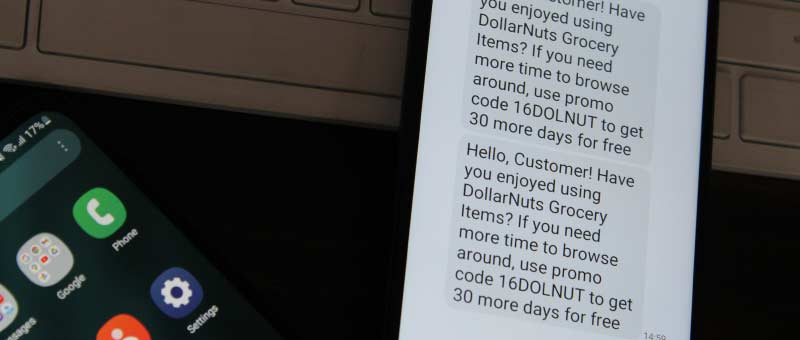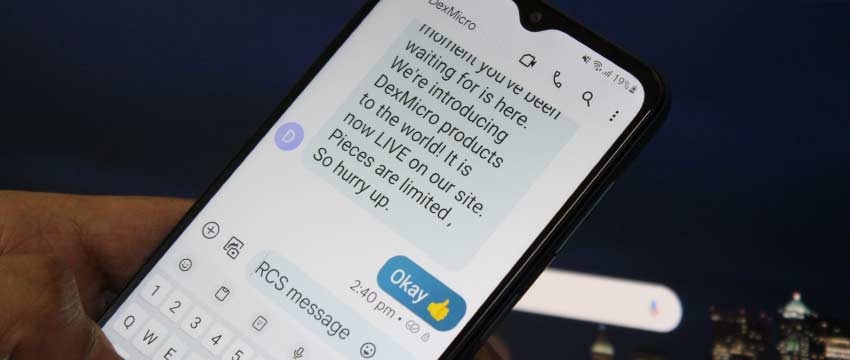| Published Date: 09/06/2023
-
Get Permission: The first step in building a contact list for SMS marketing is to get permission from your customers. In most countries, it's illegal to send SMS messages to people who haven't opted-in to receive them. This means that businesses must obtain consent from their customers before adding them to their SMS contact list. There are several ways to do this, including having customers opt-in via a web form or by sending a keyword to a shortcode.
-
Offer Incentives: Offering incentives is a great way to encourage customers to opt-in to your SMS contact list. This can include things like exclusive discounts, early access to sales, or free shipping. By offering incentives, businesses can make it more appealing for customers to sign up for their SMS contact list.
-
Promote Your SMS Program: Businesses should actively promote their SMS program to customers to encourage sign-ups. This can include adding sign-up forms to their website, social media, and email marketing campaigns. Businesses can also promote their SMS program via in-store signage and other marketing materials.
-
Make Opting-Out Easy: It's important to make it easy for customers to opt-out of receiving SMS messages. This can include including opt-out instructions in each message and having a clear opt-out process on your website.
-
Use a Shortcode: Using a shortcode is a great way to make it easy for customers to sign up for your SMS contact list. Shortcodes are easy to remember, and customers can simply send a keyword to the shortcode to sign up.
-
Use a Third-Party SMS Provider: Using a third-party SMS provider is a great way to build your SMS contact list. These providers can help you manage your list, send messages, and track your results. They can also provide you with tools to help you grow your SMS contact list, such as web forms and opt-in incentives.
-
Be Clear About Your Messaging: It's important to be clear about the type of messages you'll be sending to your SMS contact list. This can include information about the frequency of messages, the type of content you'll be sending, and any special offers or promotions that customers can expect to receive.
-
Segment Your List: Segmenting your SMS contact list is a great way to ensure that your messages are relevant to your customers. This can include segmenting your list by location, purchasing behavior, or other factors that are important to your business.
-
Comply with Regulations: Complying with regulations is crucial for building a successful SMS contact list. This includes obtaining consent from your customers, providing opt-out instructions in each message, and ensuring that your messages are in compliance with local regulations.
-
Test Your Messages: Testing your messages is important to ensure that they are effective and engaging. This can include testing different message lengths, calls to action, and incentives to see what works best for your business.
Conclusion: Building a contact list for SMS marketing requires businesses to obtain consent from their customers, offer incentives, promote their SMS program, make opting-out easy, segment their list, use a shortcode, use a third-party SMS provider, be clear about their messaging, test their messages, and comply with regulations. By following these steps, businesses can build a successful SMS contact list and leverage this marketing channel to engage with their customers and drive sales.
Send Multimedia Messages (MMS) as Part of SMS Marketing
Multimedia messages (MMS) can be sent as part of SMS marketing campaigns. MMS messages are a more advanced version of SMS messages that allow for the inclusion of multimedia content such as images, videos, and audio files. This provides businesses with more opportunities to engage with their customers and communicate their message effectively.
MMS messages can be used to showcase new products, share visual demonstrations, provide exclusive offers or discounts, and promote events or new releases. The multimedia content included in the message can be used to capture the attention of the recipient and convey the message in a more engaging and memorable way.
However, there are a few things to keep in mind when sending MMS messages as part of your SMS marketing campaign. Here are some best practices to follow:
-
Consider the File Size: MMS messages have a maximum file size limit of 600 KB. It is important to ensure that the multimedia content you are sending is optimized for size so that it can be delivered successfully to the recipient's device. Large file sizes may cause the message to fail to deliver or take a long time to download, resulting in a poor user experience.
-
Focus on Relevance: When sending MMS messages, it is important to ensure that the multimedia content included in the message is relevant to the recipient and the message being conveyed. It should add value to the message and help to reinforce the message being conveyed.
-
Use High-Quality Content: The multimedia content included in the message should be high-quality and visually appealing. Poor quality images or videos can detract from the message being conveyed and result in a negative user experience.
-
Test Your Messages: It is important to test your MMS messages on multiple devices and networks to ensure that they are delivered successfully and that the multimedia content is displayed correctly. Testing can also help to identify any issues that may arise during delivery, such as slow download speeds or broken links.
-
Optimize For Mobile: MMS messages should be optimized for mobile devices, which means they should be easy to read and view on smaller screens. This can be achieved by using large, easy-to-read fonts and keeping the layout simple and uncluttered.
Conclusion: MMS messages can be a powerful addition to your SMS marketing campaign, allowing you to engage with your customers in a more visually appealing and memorable way. By following best practices such as optimizing the file size, focusing on relevance, using high-quality content, testing your messages, and optimizing for mobile, you can ensure that your MMS messages are delivered successfully and provide a positive user experience.
Difference Between SMS Marketing and Email Marketing
SMS marketing and email marketing are two popular methods used by businesses to communicate with their customers and promote their products or services. While both channels share some similarities, there are also some key differences between the two:-

-
Reach and Open Rates:
SMS marketing is a more direct and immediate way to reach customers. It has an open rate of 98%, which means that almost all text messages are read within a few minutes of being received. On the other hand, email marketing has an average open rate of around 20%, which means that only a small portion of the email messages sent are actually opened by the recipients. This makes SMS marketing a more effective channel for time-sensitive messages, such as flash sales, promotions, and urgent alerts.
-
Opt-in and Consent:
One of the biggest differences between SMS marketing and email marketing is the opt-in and consent requirements. SMS marketing requires customers to opt-in to receive messages, which means that businesses must have explicit consent from their customers to send them SMS messages. Email marketing, on the other hand, has more relaxed opt-in requirements and allows businesses to send emails to customers who have not explicitly opted-in, as long as they provide an easy opt-out option.
-
Content and Length:
SMS messages are limited to 160 characters per message, which means that businesses must be concise and to the point in their messaging. This can be a challenge for businesses that want to convey a lot of information or details about their products or services. Email marketing, on the other hand, allows for longer messages and the ability to include images, links, and attachments. This makes email marketing a more effective channel for delivering more detailed and comprehensive messages, such as newsletters, product updates, and educational content.
-
Cost and ROI:
SMS marketing typically has a higher cost per message compared to email marketing, which makes it less cost-effective for larger campaigns. However, SMS marketing has a higher conversion rate and ROI, which means that businesses can see a higher return on investment for their SMS marketing campaigns compared to email marketing campaigns.
-
Personalization and Targeting:
SMS messages are typically more personal and intimate than email messages. This makes SMS marketing a more effective channel for delivering personalized messages and offers, such as personalized discounts, reminders, and event invitations. Email marketing, on the other hand, allows for more advanced targeting and segmentation, which makes it a more effective channel for reaching specific audience segments based on demographics, behavior, and interests.
Conclusion: SMS marketing and email marketing are both effective channels for businesses to communicate with their customers and promote their products or services. While both channels share some similarities, they also have some key differences, including reach and open rates, content and length, cost and ROI, personalization and targeting, and opt-in and consent requirements. By understanding the differences between the two channels, businesses can choose the right channel for their messaging and marketing goals.
